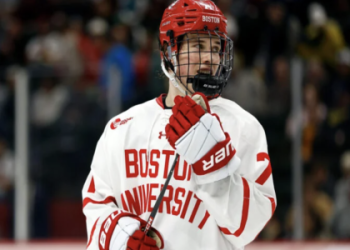In the 1997 NBA season, the Utah Jazz made a profound mark on professional basketball. With a stellar roster that showcased both talent and strategy, the Jazz reached the NBA Finals for the first time in franchise history. Although they fell to the Chicago Bulls in a heart-stopping six-game series, the core players of the Jazz left an indelible imprint on the league.
Leading the charge, the iconic duo of John Stockton and Karl Malone defined the Jazz’s success that year. Stockton, considered one of the greatest point guards in NBA history, exhibited exceptional court vision and passing skills. He led the league in assists with an astounding average of 12.3 per game. “I love making plays for my teammates,” he would often say, reflecting his team-first mentality. His chemistry with Malone was the lifeblood of their offensive strategy, highlighted by their trademark pick-and-roll, where Malone’s strength and finesse would often leave defenders scrambling.
On the other hand, Karl Malone, known as “The Mailman” because he delivered on the court, had an outstanding year. Averaging 27.4 points per game, he not only scored with efficiency but also added crucial rebounds, averaging 9.9 per game. Malone’s physicality and skill made him a nightmare for opponents. Throughout the season, he consistently gained confidence as he dominated lesser defenders. His mantra? “Every game is an opportunity to get better.” This belief drove him to push his limits.
Supporting this dynamic duo was a cast of remarkable players. Jeff Hornacek, known for his sharpshooting prowess, contributed significantly. Hornacek’s ability to stretch the floor and hit crucial three-pointers kept defenses honest. Meanwhile, 7-foot-1 center Greg Ostertag brought defensive grit, anchoring the paint and effectively altering opponents’ shots. His presence made driving to the basket a formidable challenge for opposing players.
Head coach Jerry Sloan played a quintessential role in shaping the team’s identity. With a defensive-minded approach combined with a disciplined offense, Sloan crafted a game plan that emphasized teamwork and execution. Vowing to balance both offensive creativity and defensive tenacity, he often inspired players with the saying, “Hard work beats talent when talent doesn’t work hard.” This philosophy resonated deeply within the team, empowering them to give their all during each game.
Looking back, the Jazz’s success in the 1997 season can be attributed to their blend of star power and complimentary players. Their path to the Finals was not without challenges, facing tough competition in the Western Conference. In the playoffs, they battled through teams like the Los Angeles Lakers and the Seattle SuperSonics, showcasing their resolve and determination. “It was a grind, but we believed in each other,” Malone often reminisced, underscoring the unity that bolstered their journey.
However, the Finals against the Chicago Bulls was their ultimate test. The series showcased the grit and tenacity of the Jazz, as they fought tooth and nail against Michael Jordan and his talented teammates. As games were played in tight margins, the mental and physical toll was significant. Stockton, reflecting on those key moments, revealed, “In the Finals, every possession matters more than ever.” This statement encapsulated the pressure the Jazz faced as they pushed for a championship.
In conclusion, the 1997 Utah Jazz roster will always be remembered for its heart and resilience. The synergy between Stockton and Malone, combined with a strong supporting cast, presented a formidable force in the league. It serves as a reminder that while individual talents are essential, it’s often the collective effort that leads to greatness. As fans reflect on that historic season, one must wonder: what do you believe was the defining moment for the Jazz during their iconic run? Share your thoughts!















